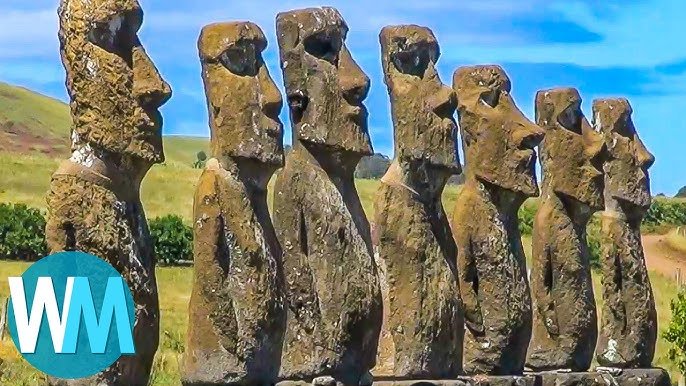The World's Most Mysterious Places Uncovered

The World's Most Mysterious Places Uncovered
The world is filled with mysterious locations that have sparked intrigue, speculation, and wonder for centuries. These places—whether ancient ruins, natural wonders, or remote spots—hold secrets that challenge our understanding of history, nature, and human existence. Here’s a look at some of the world’s most enigmatic locations that continue to capture the imagination of explorers and researchers alike.
-
The Bermuda Triangle
Located between Miami, Bermuda, and Puerto Rico, the Bermuda Triangle has been the subject of countless theories ranging from natural phenomena to extraterrestrial involvement. Over the years, numerous ships and aircraft have disappeared without a trace, leading to widespread speculation. While most scientists attribute the disappearances to weather conditions, such as sudden storms or methane gas eruptions, the Bermuda Triangle remains an area of great fascination and mystery. -
Stonehenge, England
Stonehenge is one of the most iconic and perplexing ancient monuments in the world. Built between 3000 and 2000 BCE, this circular arrangement of massive stones on the Salisbury Plain continues to intrigue archaeologists and historians. While there are several theories about its purpose—ranging from a calendar for tracking celestial events to a religious site or burial ground—the exact reason why it was built remains unknown. Its construction, with massive stones transported from distant locations, further deepens the mystery. -
The Nazca Lines, Peru
The Nazca Lines are a collection of enormous geoglyphs etched into the desert floor in southern Peru. These intricate designs, which include shapes of animals, plants, and geometric patterns, are so large that their full scale can only be appreciated from the air. Created between 500 BCE and 500 CE, the purpose of the lines is still debated. Some believe they were made for religious rituals or astronomical observations, while others suggest they had a connection to ancient extraterrestrial visitors. -
Easter Island, Chile
Easter Island is home to the famous Moai statues—large, carved stone heads that have puzzled researchers for centuries. How the ancient Rapa Nui people transported and erected these massive statues is still a mystery, as the island is remote, and the statues are extremely heavy. Theories abound, ranging from the use of ropes to the belief that the statues had a spiritual purpose, but the true method of their construction and transport is yet to be definitively explained. -
The Pyramids of Giza, Egypt
The Great Pyramids of Giza are among the most famous and enduring mysteries in the world. Built around 4,500 years ago, these colossal structures were constructed with such precision that even modern engineering marvels would struggle to replicate them. While many believe the pyramids were built as tombs for the pharaohs, the exact methods of construction, the purpose of the internal chambers, and the alignment of the pyramids with celestial bodies are still the subject of intense debate and research. -
The Lost City of Atlantis
The myth of Atlantis has captured the imagination of historians and adventurers for centuries. Described by the philosopher Plato as a technologically advanced civilization that sank into the ocean in a single day and night, Atlantis has become the stuff of legend. While no physical evidence of Atlantis has ever been found, various theories suggest it may have been inspired by real places that experienced natural disasters or catastrophic events.